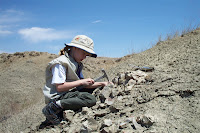Ever since we stared finding exoplanets (planets orbiting a start other than our sun) back in 1992, the hunt has been on to find a Earth-like planet. Of course, the planets we found first were not the small rocky worlds like our own, but massive gaseous Jupiter-sized objects that are very close to their stars, appropriately called hot Jupiters. Over time, we got better at the techniques and have become able to find smaller and smaller planets farther and farther from their host stars. Now, have we finally found that long sought-after 'second Earth'?
So our first question is simply, what did they find? To really understand this situation, you need to understand the star this planet is orbiting. This is not a medium-large yellow star like our sun, but a much smaller red dwarf. Red dwarfs have about 1/3 of the mass of the sun and a
luminosity of about 1.3% of our sun. This means a planet has to be much closer to the star then the Earth to our Sun to have any chance for life to survive.
That brings us to the planet Gliese 581g (such a creative name). Because of the method used to discover this planet, we know it has a
minimum mass of about three times that of Earth, and it is unlikely that it is much larger than that. It is also the right distance away from the star to be in what's called the "habitable zone". This is the zone where a planet could potentially have liquid water on its surface. So far, so good.
Now is when things get tricky. There is still much astronomers don't know when it comes to rocky planets, and planets in general for that matter. Gliese 581g is large enough to hold on to an atmosphere, but atmospheres are tricky things to understand. Atmospheres are also hugely important for life. Mars and Venus can both be said to be in the habitable zone of our Sun, but because of Venus's overabundant atmosphere, and Mars' lack thereof, they are both devoid of life. To make things more complicated, Gliese 581g is probably tidally locked with its host star. This means that one side of the planet is in perpetual day while the other side never sees the sun.
Science rarely, if ever, gives us cut-and-dry answers. Does Gliese 581 harbor life, or would life even have a chance there? We can't be sure. What makes this discovery truly exciting, though, is the speed at which it happened. We have only been finding exoplanets for less than two decades and, of that time, our technology has only become sensitive enough to find small planets much more recently. We have really only begun to survey our neighbor stars in the galaxy and already we have found a planet that is a decent candidate to support life. If this trend continues, there could be millions of such worlds in our own galaxy alone. Think of the prospects if even just a small percentage of those worlds ever developed life.
I think it's time to kick up the planet hunt one more notch.








